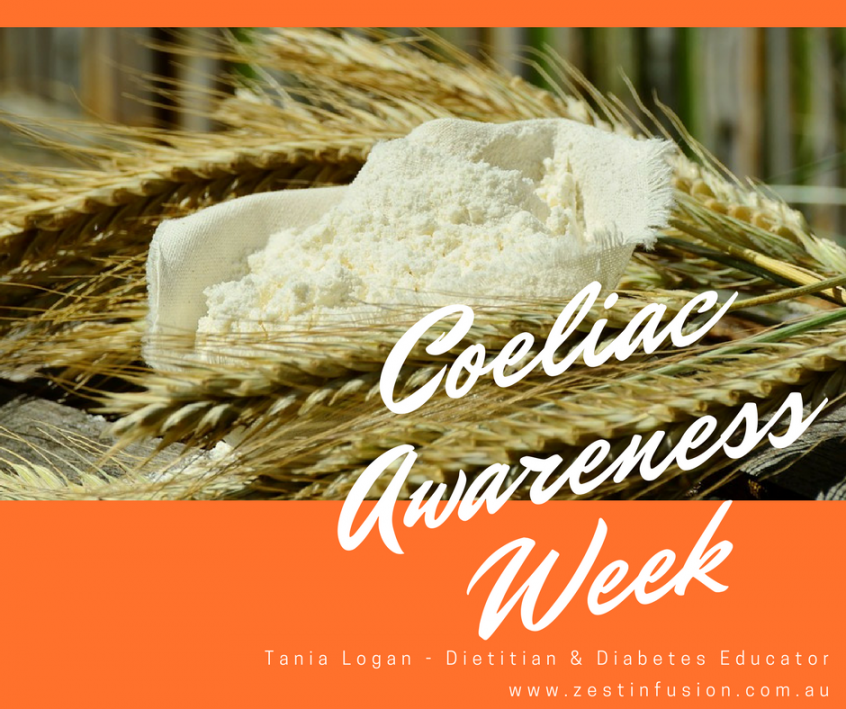Coeliac disease is a serious medical condition where the body’s immune system does not respond normally to a protein in food called gluten. This damages the lining of the small intestine which affects the absorption of important nutrients and can lead to malabsorption and a variety of gastrointestinal problems. If coeliac disease is not treated, long term complications can include nutritional deficiencies, osteoporosis, liver damage, other autoimmune conditions, infertility, and some forms of cancer.
Coeliac disease affects more than 1 in 70 Australian, however approximately 80% are not diagnosed.
The symptoms of coeliac disease vary considerably from person to person. Some people experience severe symptoms, while others have no obvious symptoms at all.
Symptoms may include:
• gastrointestinal symptoms like diarrhoea, constipation, nausea, abdominal pain, cramping, bloating, and wind
• chronic tiredness, fatigue, weakness and lethargy
• iron deficiency anaemia or other vitamin and mineral deficiencies
• sudden or unexplained weight loss or poor growth in children
• recurrent mouth ulcers or dental enamel defects
• skin rashes
• easy bruising of the skin
If you have any of these symptoms, you should talk to your GP about testing for coeliac disease.
There is also a very strong genetic link with coeliac disease. If someone in your family has been diagnosed with coeliac disease, you have a 1 in 10 chance of also having coeliac disease. This means that if someone in the family has been diagnosed with coeliac disease, all family members should be screened as well, including parents, grandparents, brothers and sisters, or children. Coeliac Australia have a great poster (http://www.coeliac.org.au/uploads/65701/ufiles/CAW/CAW_Poster_Family.pdf) that highlights the family link. They have also developed a family screening letter (http://www.coeliac.org.au/uploads/65701/ufiles/Brochures/FamilyScreeningLetter.pdf) that a family member can take to their GP to help with discussions about screening for coeliac disease.
Blood tests are used in screening for coeliac disease. They measure levels of antibodies in the blood which are usually high in people with untreated coeliac disease. During this process, keep eating gluten. If you have already started a gluten free diet, the tests used to diagnose coeliac disease may not be accurate. If you have stopped eating gluten, a normal diet must be resumed (with gluten in it) for at least 6 weeks prior to testing. If screening tests are positive, a biopsy of the small intestine is needed to diagnose coeliac disease. The biopsy is examined under a microscope to see the inflammation and damage to the small intestine which is characteristic of coeliac disease.
If you, a family member, or friend has been diagnosed with coeliac disease, it can be managed with a gluten free diet. Gluten is a protein found in wheat (including spelt), rye, barley, and oats. Gluten free diets are very popular for everyday Australians for a variety of reasons, but coeliac disease is more than just a dietary fad. Lifelong adherence to a strict gluten free diet is necessary for the small intestine to heal, symptoms to improve, and to reduce the risk of long term complications.
Many foods available to us are naturally gluten free including fresh fruit and vegetables, fresh meat and chicken, fish, eggs, legumes, nuts and seeds, as well as milk and cheese. There are also a range of products available that are labelled “gluten free” which contain no detectable gluten. If any ingredient in a food comes from wheat, rye, barley or oats, then this must be declared on the ingredient list. It is also important to avoid cross contamination by avoiding products with statements such as ‘may contain gluten’ as well as not sharing food or utensils (like knives or toasters) that may have been in contact with food containing gluten.
Here are some simple and delicious meal ideas if you are catering for someone with coeliac disease:
• Start the day with gluten free muesli for breakfast. Try this recipe (http://www.taste.com.au/recipes/gluten-free-muesli/1897e61c-d47f-472e-8723-6197a8b8784b) from taste.com.au
• Lunch can be tricky because many of us often rely on bread options. This Sweet Potato and Asparagus frittata (https://zestinfusion.com.au/roasted-sweet-potato-asparagus-frittata/) is a delicious gluten free alternative.
• Fresh meat and vegetables are naturally gluten free, like this Oven-baked Salmon and Vegetables (https://zestinfusion.com.au/oven-baked-salmon-vegetables/).
• Snacks and treats can be tricky. There are lots of gluten free alternatives now that make baking a lot easier. Many recipes can be made gluten free simply by substituting an alternative flour. For something a bit different, these Chocolate Macaroons (http://www.taste.com.au/recipes/chocolate-macaroons/48da11b4-7719-4669-a7fe-7a7c5b0be68d) from taste.com.au are delicious, or try this Magic Bean Carob Cake (https://zestinfusion.com.au/magic-bean-carob-cake/).
For more information on coeliac disease, Coeliac Australia has a wealth of information on their website at www.coeliac.org.au. If you would like help with managing coeliac disease, or practical assistance for incorporating a gluten free diet, please contact me. You can find my contact details and how to book an appointment on our website at www.zestinfusion.com.au.
Share this Post

